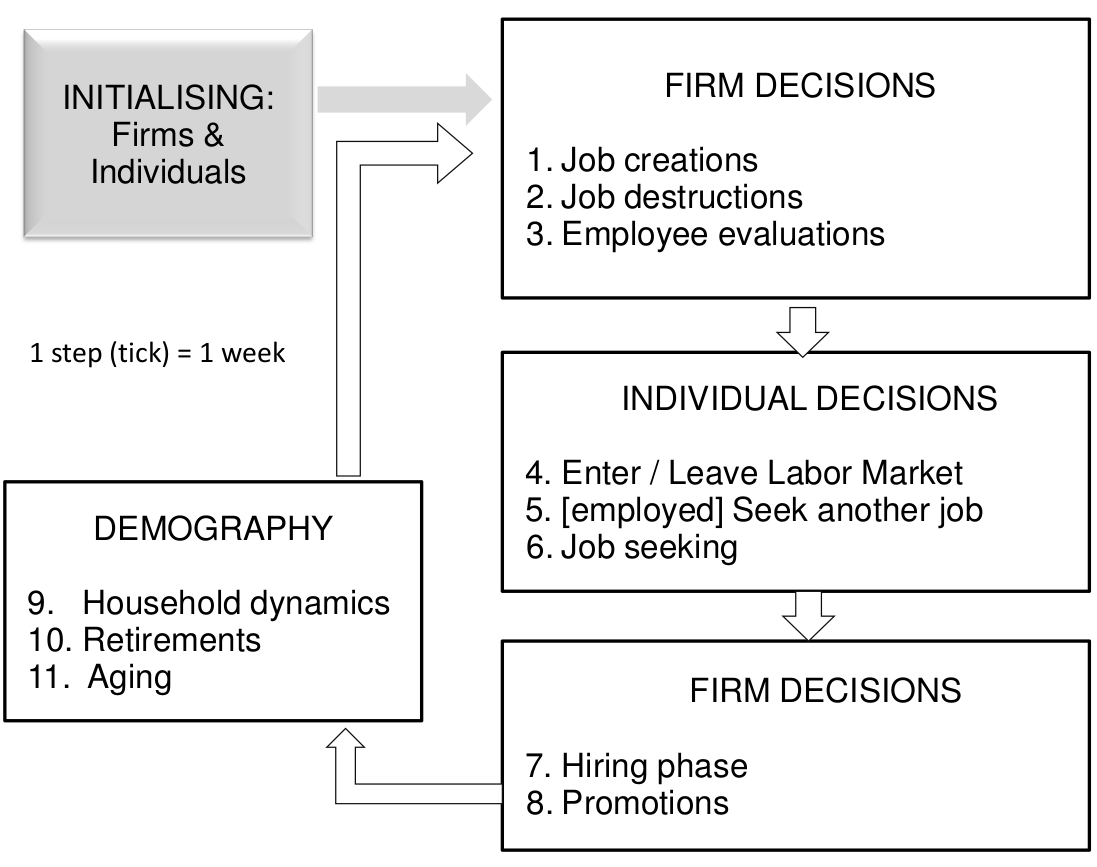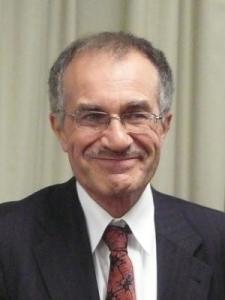ABOUT WORKSIM
Multi-agent model of the labour market
WorkSim is a project created by Jean-Daniel Kant in 2006 to model and simulate the French labour market. It is led by a multidisciplinary team comprising computer scientists (JD Kant, Olivier Goudet) and an economist (Gérard Ballot). It uses techniques derived from artificial intelligence, multi-agent systems, composed of interacting software agents that aim to mimic the behaviour of economic agents. We draw on the most recent microeconomic analysis while taking into account that human rationality is limited in a very complex market.
Main features
Individuals and firms
Unlike many models, WorkSim takes into account both sides of the labour market: individuals and companies. The agents each have specific attributes, determined once and for all at their creation, as well as internal variables that evolve throughout the simulation. Individuals and businesses are initialized on the basis of numerous INSEE data available: demographics (especially the households that are modelled in WorkSim), and economics (employment, contracts, etc.). Thus WorkSim reproduces the labour market on a scale currently varying between 1/2000 and 1/1400 (from 20,000 to 30,000 agents).
Institutions
The main elements of labour law (CDD and CDI labour contracts, termination indemnities, etc.) are integrated, as well as 3 modules representing: the State recruiting civil servants, JobAds, the equivalent of a jobcenter-type site that lists job offers from companies and job applications from individuals, and a statistical institute that disseminates a limited number of statistical data to agents.
Limited rationality decisions
Individuals decide at any given moment whether they remain in their current state (e. g. unemployed, inactive, employed) or whether they decide to change state (e. g. seek a job or go into inactivity for an unemployed person, seek a job in another company for an employee, etc.). Unlike conventional models, these decisions respect the cognitive limitations of human subjects (bounded rationality), information is available but limited in quantity. Individuals look for the state that offers the best satisfaction, among the choices available to them. At the heart of people's behaviour is an extended version of the theory of job search offered in labour economics.
Endogenous choice for job creation
Companies make decisions to increase their profits. Depending on their demand (which varies over time), they decide to create or eliminate positions, hire, evaluate and manage their staff (e. g. promotions). The decision to create a job requires an innovative demand anticipation mechanism, with finite time horizon to take account of limited rationality. It makes it possible to endogenize the choice between a fixed-term contract (and its duration) and a permanent contract.
Validation on actual data
WorkSim parameters are calibrated automatically (using a powerful optimization algorithm, CMA-ES) to reproduce more than 60 real data (INSEE, DARES, Eurostat,...). In addition to these targets, most of the stylized facts of the French labour market are reproduced by WorkSim (flow, segmentation of the labour market, long-term unemployment, etc.).
Evaluation of labour market policies
We have already evaluated several policies on the labour market with WorkSim: generation contract, reduction of charges, elimination of fixed-term contracts, labour law, etc. For more details, see publications.
See also this presentation.
How does WorkSim work ?
Simulation Cycle
Here we show the complete simulation cycle in WorkSim. 1 step in the simulation equals 1 week in real life, in order to take into account short contracts.

Individuals' Decision Diagram
This figure represents the decisions of individuals, depicted as a State Diagram. At each time step, the individual compares the usefulness of his current state, with the states he can reach, and chooses the best.



